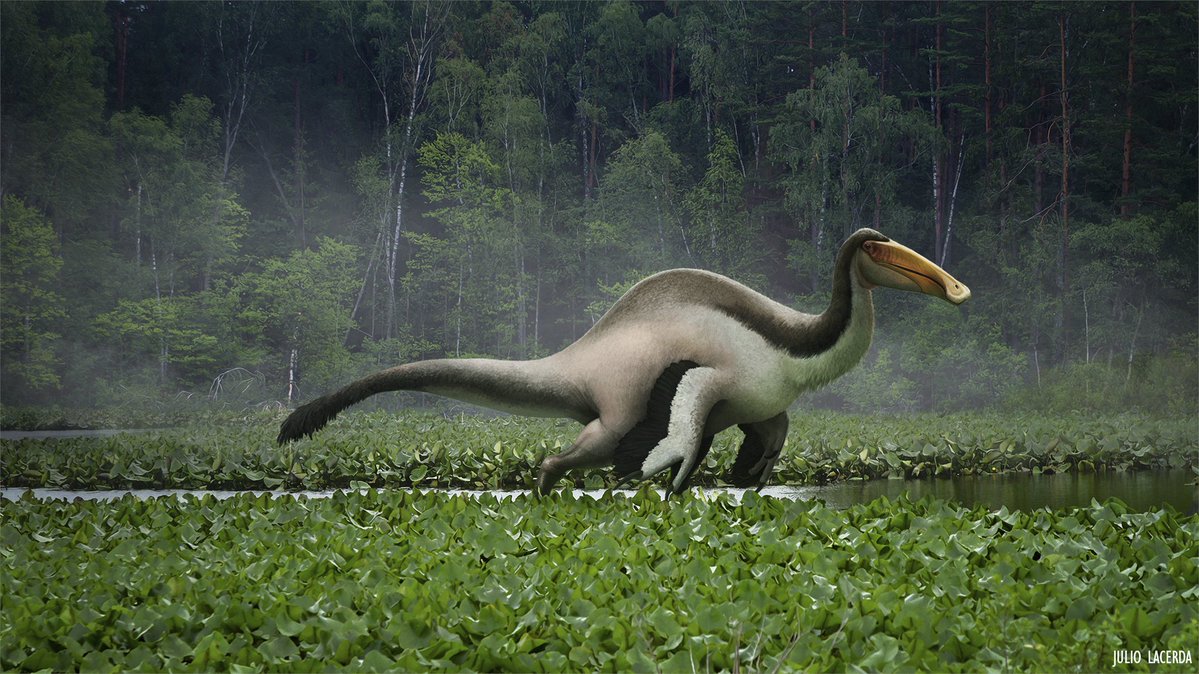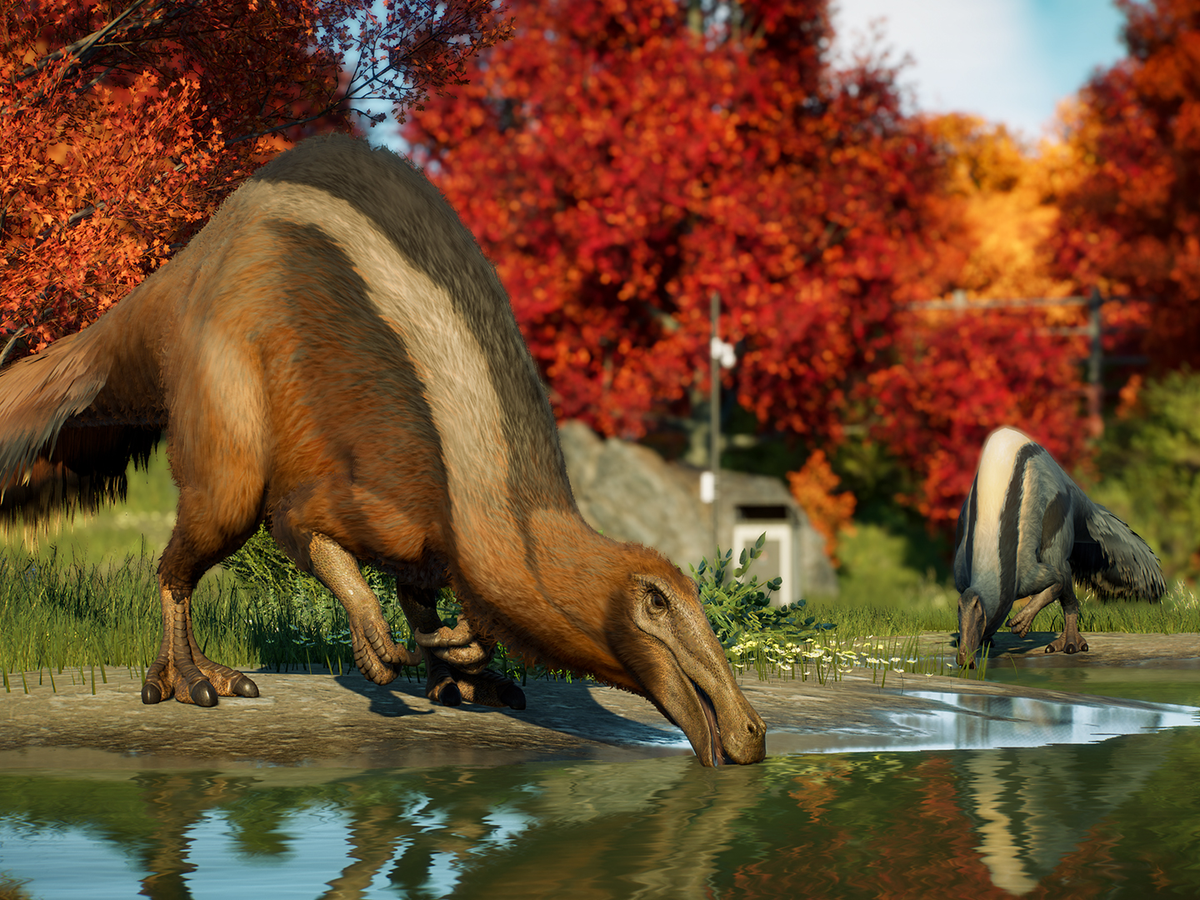Deinocheirus
Die-noe-ky-rusName meaning: Horrible Hands
Time Period: Late Campanian-Early Maastrichtian (Late Cretaceous) 70 Mya
Locations: Mongolia Nemegt Formation
Taxonomy: Theropoda-Ornithomimosauria-Deinocheiridae
Subspecies: D.mirificus
Characteristics ~ ~ ~ ~
Deinocheirus was magnificent; the subspecies D.mirificus means unusual and wonderous. It was massive, being around 11 meters long and leaning upwards could reach 19 feet tall and weighing over 6 tons. It had a giant beak and broad feet like a duck, and its fossils contained fish scales, Fishing in rivers and swamps while eating the underwater plants and leaves. It’s beak had no teeth and couldn't chew, but it ate gastroliths small stones that would grind up food inside the stomach. Its back vertebrae formed a hump to make it look bigger and possibly store fat and the tail vertebrae formed a pygostyle which is an attachment point for feathers meaning Deinocheirus had a tail fan. As for those feathers, Deinocheirus was most likely a heavily feathered dinosaur with a thick shaggy coat to protect its skin. Its large horrible hands with 8 inch claws served various purposes with hunting and defense, and foraging for difficult-to-reach plants, pretty typical uses, nothing horrible about them I’d say. Deinocherius lived in the very fossil-rich Nemegt formation. Species known to have coexisted with Deinocheirus are hadrosaurs like Barsboldia and Saurolophus, Titanosaurs Nemegtosaurus and Opisthocoelicaudia dome-heads like Homalocephale and Prenocephale. As well as other species like Gallimimus Protoceratops Velociraptor Therizinosaurus , Tarcia, Mononykus, and Tarbosaurus



History & Fossils ~ ~ ~
Deinocheirus was originally discovered in 1965 in the Gobi desert of Mongolia. The skeleton was extremely fragmentary except for its forelimbs, which gave the creature its name. It was believed for a while that it was a carnivorous theropod with disproportionately large arms. Further analysis found Deinocheirus was closest to an herbivorous ornithomimosaur or ostrich mimic having very similar hands but that's mostly where the similarities end. Deinocherius was elusive; nobody knew what this mysterious therapod may have looked like. It wasn't until 2011 that a paleontologist met up with a French fossil dealer who had acquired several bones of a Deinocheirus, including a skull, spine, feet, and most importantly a hand. It was this that revealed most of the mystery of what Deinocheirus was


Media Deptictions ~ ~ ~ ~
Prehistoric Planet: Only has one scene featuring the Deinocheirus. In it, the Single Deinocheirus is being onslaughted by blood-sucking flies before and attemps to satiate this itch by finding a suitable backscrather. I hope to see more of it in a potential season 3 intracting with a Therizinosaurus or Tarbosaurus

Prehistoric Kingdom


Jurassic World Evolution 2: Featured in the Feathered species pack alongside Yutyrannus, Sinosauropteryx and Jeholopterus. Requiring ground leaf and lots of water for fishing


Amazing Dinoworld A family of Deinocherius are evading a Tarbosaurus when the “protagonist” Deinocherius with a healed bite mark on its back escapes by falling off a cliff while the rest of the family get eaten.